

Table of contents
- Exotic classics
- Small contemporaries
- carnivorous plants
- Extraordinary beauties
- General care tips
- sources of supply
- Conclusion
Exotic plants are an interesting eye-catcher with their bizarre shapes and bright colors. However, only a few representatives from the subtropical and tropical regions can cope with our damp and cold weather in winter. Even rainy summers can take a toll on the perennials. However, many exotic plants can be cultivated indoors all year round. The range of unusual plants is large. Whether it's a window sill or a sunny spot in the conservatory, the tropical plants are available in different sizes.
Exotic classics
Green plants in our interiors create a calming atmosphere and help to better process stressful moments. At the same time, the plants reduce the concentration of dust and sustainably improve the climate in their area. There is a large selection of indoor plants on the market. In this area, however, not native, but exotic plants are enjoying growing popularity.
The reason: In the living area, the plants are not exposed to the local climate. Because depending on their origin, the perennials and shrubs react sensitively to strongly fluctuating temperatures. In the house and office there is the possibility of offering the plants constant and consistent conditions.
Cultivating exotic indoor plants in the apartment is not a fashion trend. The best-known classics include the following perennials:
- aloe vera
- rubber tree
- Yucca Palms
- banana plants
Various types of cacti and succulents complete the list of plants that have graced home window sills and conservatories for decades. However, the selection of exotic plants is not limited to "well-known" varieties. With a little effort and care, you can have exceptional exotic perennials in your living space.
Small contemporaries
When they hear the term “tropical and Mediterranean plants”, many people automatically picture large trees with unusual leaves and flowers. It is not always possible to set up an imposing Monstera deliciosa or Ensete ventricosum maureli in the apartment. Even if you have little space, you don't have to do without the cultivation of exotic beauties. Smaller varieties are suitable for care on the narrow windowsill.
Choisya ternata
The slow-growing rue family is satisfied with small containers in the first two years of life. The plant, which originates from North America, impresses with its citrus-like scented, white flowers. Colloquially, the evergreen plant is known under the name "Mexican orange flower". The plants need a semi-shady location. Older representatives of Choisya ternata can spend the summer months in the garden or in the garden. spend on the bright terrace.
Hoya carnosa
The porcelain flower belongs to the milkweed family. The intense, sweet fragrance of the waxy flowers distinguishes this plant. Wax flowers are frugal and get by with a shady place by the window. Under optimal conditions, the plant forms meter-long tendrils and lush flowers. Older porcelain flowers can be rejuvenated and multiplied by offshoots. The substrate should not dry out.
Hoya kerrii
Closely related to the porcelain flower, however, this species has heart-shaped leaves. The herbaceous climbing plant does not tolerate direct sunlight and is sensitive to waterlogging. With increasing growth of the long shoots, it is advisable to tie them decoratively to trellises.
bonsai
Larger plants that become woody and tolerate pruning can often be trained into small trees. However, the cost of maintenance is high. In terms of location and watering, the plants have the same requirements as their larger relatives. The following perennials, for example, are suitable for cultivation in bonsai format:
- citrus trees
- Natal Plum (Carissa macrocarpa)
- Magnolia family (eg. B. Michelia figure)
- Spring osmanthus (Osmanthus x burkwoodii)
- Japanese star anise (Illicium anisatum)

Tip:
Hydroponics has proven itself in the care of exotic plants. The inorganic material makes maintenance easier.
carnivorous plants
Indoor plants serve different functions. With their dense, partly evergreen foliage, they filter the pollutants in the air and muffle bright sounds. Some varieties can also help control pests. Insectivorous plants are a special whim of nature. In their natural habitat, the plants are unable to obtain nutrients from the soil.
This deficit has not led to the extinction of the affected perennials, but rather to their further development. The plants gain the vital minerals through meat. With the help of an enzyme cocktail, the plants digest their victims, which mainly consist of insects and small amphibians.
pitcher plant
A bright, sunny location and high humidity are necessary for the Nepenthes to thrive optimally. The plants from the carnation family got their name because of their large pitchers, which are used for attracting and digesting.
venus flytrap
Dionaea muscipula is one of the best-known carnivorous plants. Their snap traps are equipped with bristles that snap shut at lightning speed when touched. A sunny and warm location is necessary for the plant to develop vigorously.

pitcher plant
Sarracenia is one of the carnivores that don't mind an airy place on the sunny terrace in the warm summer. Healthy, older pitcher plants can even tolerate a light frost.
cobra lily
Darlingtonia californica is still relatively unknown, but by no means unattractive. The tubular leaves are characteristic of the perennial plant. This foliage, arranged in loose rosettes, rarely reaches a height of 1 m. Cobra lilies are moderate insect scavengers and also lack enzyme juices for digestion. The plant prefers running water and is suitable for planting in indoor fountains.
The carnivores among the perennials have a rather stocky growth. Only the pitcher plant, with its hanging shoots and heavy catching cans, can reach a length of over 50 cm when cultivated optimally. Carnivorous plants are a special case and recover only with difficulty from mistakes in care. Pay attention to the following points if you want to successfully keep Venus flytrap and Co. in your home:
- Choose the right location
- Use special lean substrate
- Don't fertilize
- The plants do not tolerate calcareous water
- Avoid drought
- Ensure high humidity
With carnivorous plants you can create an interesting eye-catcher in the conservatory or bright living room. You can cultivate several specimens next to each other in tall, glass vessels. To avoid diseases and rot, you should only use a lean substrate that is specially tailored to the needs of the perennials. The plants gratefully accept one or the other feed. If your living space is not screened off with fly screens, the plants actively provide themselves with "fresh meat" in summer.
Tip:
The top layer of soil must not dry out in carnivorous perennials. Keep the soil evenly moist without waterlogging.
Extraordinary beauties
If you want to bring an extraordinary flair to your living room, you should take a look at these exotic houseplants:
bow hemp
Sanseveria is one of the decorative desert plants and contributes to a healthy climate in living spaces. The nickname "barbed tongue" describes the growth form of the pointed, strong leaves. Over 70 different types are commercially available. The plants vary in leaf color and pattern. The location depends on the respective Sanseveria variety. Bow hemp takes up little space. The plant can reach a maximum height of 1 m.

telegraph plant
Mimosa and Venus flytraps are not the only representatives of the plant kingdom that are affected by a rapid movement of their shoots or buds. leaves stand out. Native to Asia, the foliage of this shrub performs vertical movements and full rotations in a matter of minutes. Colloquially, the telegraph plant was given the nickname "Dancing Plant". The upright growing perennial with the elliptical shaped leaves prefers a bright place, the ambient temperature should not fall below 18°C.
Abyssinian Banana
With its red-green leaves and red petioles, Ensete ventricosum maurelii is a beauty. The perennial foliage plant grows quickly, but takes up a maximum of half a square meter of space. The location should be shady to partly sunny, in summer a move to the garden is possible. The perennial is robust, even without a "green thumb" the cultivation of the Abyssinian banana can succeed.
Indian banana
'Rare Fruit' or 'Papau' is a deciduous plant that prefers conservatories and bright living spaces. The perennial belongs to the annona family and can reach a height of over 3 m. The advantage: If the plant grows too much for you, you can move the plant to the bed all year round. Older Indian bananas tolerate temperatures down to -20° C.
Banana Peel Tree
The name isn't the only exotic thing about Pterospermum acerifolum. In combination with flowers and leaves, the optical impression is created as if peeled bananas are hanging on the shrub. The plant grows quickly and with optimal care can reach a growth of about 1 m within a year. The plant, also known as the "plate tree", has white umbels of flowers that smell intensely of orchids. The flowers can also be used as vase decoration.
candlestick flower
Ceropegia is a succulent with drooping stems and tubular flowers. The dogbane plant can reach a length of up to 2 m with its twining branches. Candlestick flowers are robust and easy to care for. The perennial comes into its own in hanging baskets.
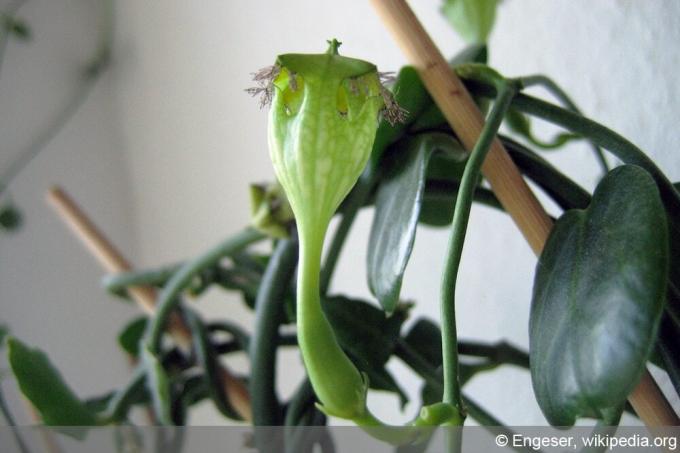
Strelitzia
bird of paradise plants Parrot flowers is an interesting plant. The colorful flowers have a long flowering period and vaguely resemble bird heads. Patience is required when caring for Strelizien. The exotics only flower after 3 or 4 years.
window leaf
Monstera deliciosa is an impressive plant. The leathery, heart-shaped leaves can reach a diameter of more than 30 cm. With increasing age, the plant grows to a height of over 2 m and should be supported.
Bromeliad Tillandsia 'Oerstediana'
The perennial species of bromeliad produces pink, yellow, or red spike-shaped flowers. The dark green foliage shimmers silver on the underside. Easy to cultivate.
coffee bush
The term "Coffea arabica" should be familiar to coffee lovers in particular. This plant species is used as a commercial supplier of the tasty beans.
What few people know: the shrub with its 5 cm long, dark green leaves is also a distinctive houseplant. After about 4 years, the white flowers appear. The ambient temperature should be between 18° - 25° C.
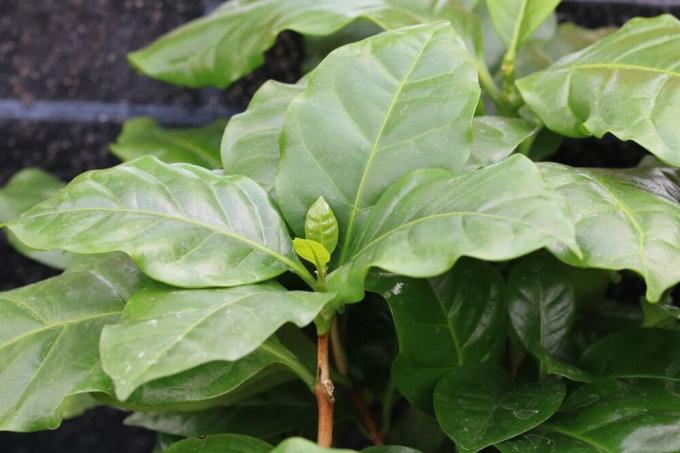
General care tips
In a large pot and with enough space, exotic houseplants can unfold in all their glory. Larger perennials place the same demands on location and care as small varieties. In order not to experience an unpleasant surprise, you should get a precise picture of the requirements of the exotic plants before purchasing tropical plants. Only a few plants come with a shady place in the kitchen or in the living room. right in the office.
- Only a few perennials tolerate direct and long-lasting sunlight
- Avoid dark locations
- Drafts unnecessarily affect the plants
- Maintain a minimum distance from walls and furniture
Choose a spot where the plant can grow undisturbed. This also means that the shoots and leaves of exotic plants are not constantly touched.
Conventional potting soil from the supermarket is conditionally suitable for Mediterranean and tropical perennials. Rely on a special substrate from the garden trade. Rhododendron earth, for example, has proven itself for many exotic species.
The soil for carnivorous plants, on the other hand, is completely poor in nutrients and consists of a mixture of peat, coconut fibers and perlite. The substrate in the bucket should have similar properties to the soil in the natural habitat. Inorganic material on the bottom of the pot prevents the roots of the plants from coming into contact with standing water. Incorrect supply of water can damage exotic indoor plants, the drainage layer can prevent this.
- Water moderately, but regularly
- Do not use hard water
- Many perennials prefer high humidity
- Avoid waterlogging and dryness
sources of supply
Finding rare exotic houseplants in regular garden centers is sometimes a difficult proposition. The choice is small. At the same time, there is a high risk that the perennials grown in the greenhouse will react sensitively to the location conditions in the apartment. Patience and gentle care are necessary to get the plants used to their new habitat. Heed the following tips:
- Do not buy weakened or wilted perennials
- The substrate should not be dry
- Prefer strong, bushy plants
During a holiday trip to distant regions it may be tempting to take plants or parts of them with you. Don't do it. Many species are on the Red List and are endangered. An export can be subject to severe penalties and significant fines. In addition, cultivation rarely succeeds.
Because what many do not take into account: In order to promote resilience, many exotic houseplants have been specially crossed with more robust species. These hybrids are less prone to disease and are forgiving of many grooming mistakes. Use offshoots and seeds from friends and acquaintances. Many exotic species can be easily propagated by cuttings.
Conclusion
There is a large selection of exotic indoor plants for the home. Many tropical perennials can easily cope with the climatic conditions in our living rooms. A lot of patience and the right care are necessary for the plants to show themselves in all their glory with their extraordinary leaves and flowers.
 garden editorial
garden editorial I write about everything that interests me in my garden.
Learn more about Exotic Plants
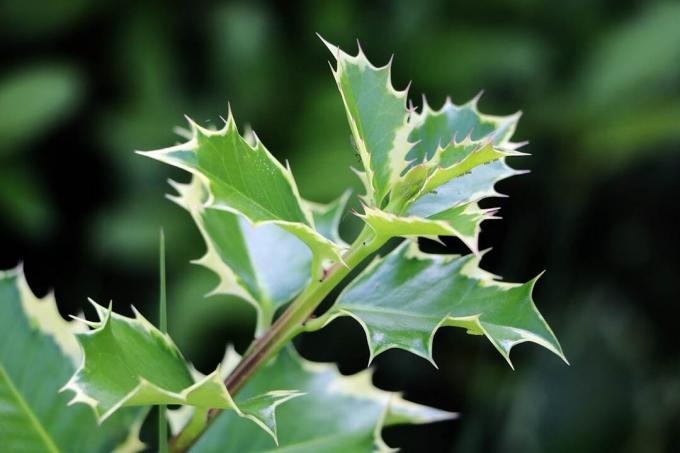
Holly, holly: care from A to Z
The European holly is one of the evergreen plants. It reaches a height of up to five meters and is ideal as a Christmas decoration or garden shrub. The native, although rarely occurring plant is the only native representative of the Ilex family and is particularly easy to care for and robust.
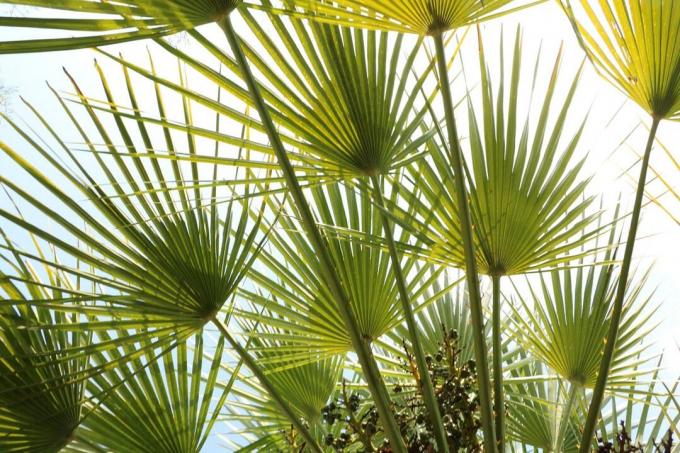
Dwarf palm, Chamaerops humilis: care instructions
The dwarf palm remains small enough that it can also be cared for in the room. However, it also cuts a fine figure in the garden. You can find out here how it is maintained and what needs to be considered.

Dwarf date palm, Phoenix roebelenii: Care from A-Z
The dwarf date palm (Phoenix roebelenii) is a particularly small, actually the smallest palm species of its genus. But that doesn't make them any less decorative. It is the most filigree and elegant date palm and hardly grows higher than one meter.

Growing vanilla plants: 11 tips for care
The vanilla plant is truly exotic in Central Europe and cannot be found in every garden. Vanilla planifolia forms the aromatic pods for which the plant is known. The cultivation of a vanilla plant is easily possible with the right care tips.

Kangaroo Paw: Caring for the kangaroo plant
Kangaroo paws are exotic plants native to southwestern Australia. Considering the care instructions, Kangaroo Paw can also thrive in Central European conditions. Maintenance requires a little more effort. If the plant gets enough attention, it will thank you with magnificent inflorescences.
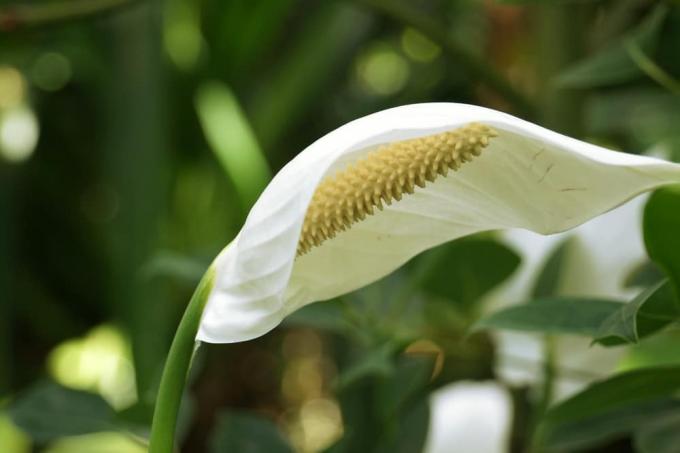
Einblatt, Spathiphyllum: care from A to Z
Because of simple! The single sheet draws everyone's attention with its extravagant appearance. The imposing flower gives sophisticated rooms that certain something. If the houseplant is in the right place, hardly any care is required. The breeder can find out here what demands Spathiphyllum places on their location.
